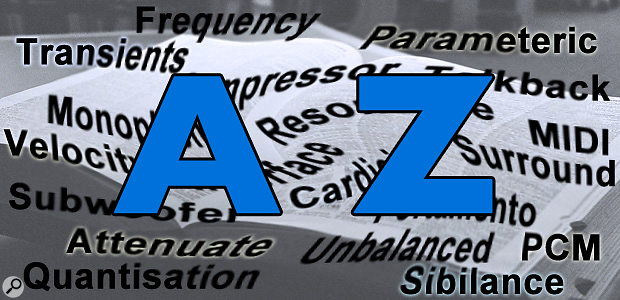You are here
Glossary
A specific way of mounting two directional microphone capsules such that they both receive sound waves from any direction at exactly the same time. Information about the direction of a sound source is captured in the form of level differences between the two capsule outputs. Commonly, the two microphones in an X-Y array are mounted with a mutual angle of 90 degrees, although other angles are sometimes used. The two capsules will have the same polar pattern, the choice of which determines the stereo recording angle (SRA). The X-Y configuration is entirely mono-compatible because there are no timing differences between the two channels.
Yamaha's alternative to Roland's GS system for enhancing the General MIDI protocol so as to provide additional banks of patches and further editing facilities.
A very robust and latching connector commonly used to carry balanced audio signals such as the outputs from microphones or line-level devices. An XLR is a type of connector developed by US manufacturer, Cannon, and used widely in professional audio systems. The company’s original X-series connector was improved with the addition of a latch (Cannon XL) and a more flexible rubber compound surrounding the contacts to improve reliability (Cannon XLR). The connector format is now is available in numerous configurations, from many different manufacturers, and with several different pin configurations. Standard balanced audio interfaces — analogue and digital — use three-pin XLRs with the screen on pin 1, the ‘hot’ signal on pin 2 and the ‘cold’ signal on pin 3.

